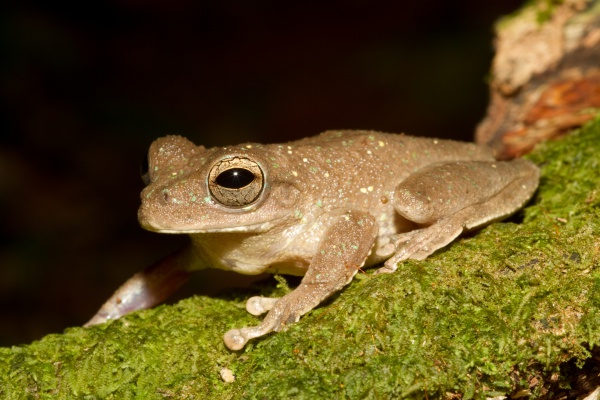Facts About Panama cross-banded tree frog
The Panama cross-banded tree frog, a captivating member of the Hylidae family, inhabits the humid Pacific lowlands of southwestern Costa Rica, extending to eastern Panama, and the Caribbean lowlands of Panama and northern Colombia.
In terms of size, males of this species reach approximately 45 mm, while females are somewhat larger, measuring up to 62 mm in snout-vent length. Their skin is tuberculate, and they exhibit a range of dorsal colors, including shades of gray, tan, or reddish-brown, accompanied by a creamy white belly.
These frogs breed during the dry season. Males typically call from the edges of forest streams, with their vocalizations more frequent on moonlit nights. Being nocturnal, they often hide under leaves but tend to do so less on brighter nights, possibly to remain vigilant against predatory bats.
Their natural habitats are diverse, spanning lowland moist and wet forests near rocky pools and stream banks, secondary forests, and even open areas. Their tadpoles are commonly found in clear pools and slow-moving waters.
Unfortunately, the Panama cross-banded tree frog is subjected to several threats. Habitat loss driven by agriculture, illegal crop cultivation, pollution from chemical spraying, logging, and human settlement poses significant risks. Nevertheless, the presence of these frogs in many protected areas offers a glimmer of hope for their conservation.

 Ecuador
Ecuador